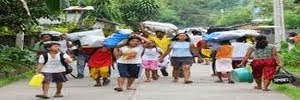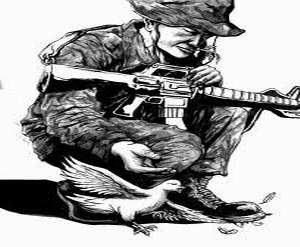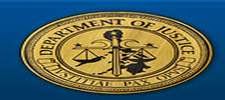From the Website of Philippine Daily Inquirer links: http://newsinfo.inquirer.net/358605/nkorean-nuclear-test-may-be-intelligence-windfall NKorean nuclear test may be intelligence windfallBy Eric TalmadgeAssociated Press
10:49 am | Thursday, February 14th, 2013
Hoping to capitalize on a rare opportunity to gauge North Korea’s nuclear capabilities, intelligence and military officials around the region are scrambling to glean data to answer three big questions: how powerful was the device Pyongyang tested, what sort of device was it, and what progress does the test indicate the nation has made. North Korea hailed Tuesday’s test as a “perfect” success, saying it used a device that was stronger and more advanced than those in its past two attempts. Add that to its successful rocket launch in December and the threat of a North Korea ready to strike at the United States, which it sees as its arch-enemy, would appear to be more real than ever. But just how close is it? The main thing intelligence officials want to figure out is what kind of device was used. Was it a plutonium bomb, like the ones it tested in 2006 and 2009, or one that used highly enriched uranium? James Acton, an analyst with the Carnegie Endowment for International Peace, said North Korea’s plutonium stockpile is small and it would be difficult and expensive for the North to produce more. But a test using highly enriched uranium, which is cheaper and easier to produce, would raise the threat that North Korea can expand its nuclear arsenal quickly. “A highly enriched uranium test would be a significant development,” he said. “Unfortunately, we don’t yet have any evidence as to the device’s design yield or whether it was made from plutonium or highly enriched uranium.” Finding that out is a race against time. Joseph De Trani, former head of the National Counterproliferation Center, predicted U.S. intelligence would determine the size and composition of the nuclear device in one to three days based partly on radioactive elements released into the environment. “Highly enriched uranium is something that degrades quickly, so you would have to collect within a 24-hour period,” especially because the traces from an underground explosion will be minimal, he said. Neighboring Japan may provide some of those answers. Its fighter jets were dispatched immediately after the test to collect atmospheric samples. Japan has also established land-based monitoring posts, including one on its northwest coast, to collect similar data. But experts caution such monitoring doesn’t always work because test sites can be sealed to prevent tell-tale leaks. They also note that North Korea has proven it has the ability to mask its tests quite well. No radioactivity was detected after North Korea’s test in 2009. The first indication of the latest test was seismic activity at the test site, which U.S. officials estimated at roughly magnitude 5.1. That would be equivalent to a medium-sized earthquake. North Korea’s two previous tests registered at magnitude 4.3 and 4.7. Working off that data, South Korean officials estimate the yield of the device — a measure of how strong its explosion is in comparison to TNT — to be between 6 and 7 kilotons. The United States has estimated it at “several kilotons.” Either way, it would be North Korea’s biggest yield yet but far less than that of the weapon dropped on Hiroshima in 1945, which was about 20 kilotons. “Because the depth of the test is not known and the geology of the test site is uncertain, translating the seismic magnitude into yield is difficult,” said Acton, the Carnegie analyst. “My own back-of-the-envelope calculation suggests a yield of between 4 and 15 kilotons.” The size of the blast suggests it was, as North Korea claims, a success. North Korea’s first test is largely believed to have fizzled, with a yield of less than 1 kiloton, and the second was between 2 and 7 kilotons. “The first test almost failed. The second one showed they could basically do it. The third one showed that this is really working,” said Won-Young Kim, a seismologist at Columbia University’s Lamont-Doherty Earth Observatory. The final intelligence task will be confirming or debunking North Korea’s claim that this time around it tested a smaller, more advanced bomb. That is important because if the North is to field a nuclear weapon on the tip of a long-range missile, it must be lightweight. Making this determination will also depend on what materials leaked from the test, which experts can use to understand what kind of a device was detonated and infer how it was designed. Experts have long been divided on whether North Korea has made much headway on clearing that hurdle, though the general consensus is they are not there yet. David Albright and Andrea Stricker, of the Institute for Science and International Security, said the latest test could be a measure of progress. “Although more information is needed to make a sound assessment, this test could, as North Korea has stated, demonstrate this capability,” they said in a statement. “ISIS has also assessed that North Korea still lacks the ability to deploy a warhead on an ICBM, although it shows progress at this effort.” Even so, they stressed North Korea could be years away from having a credible nuclear weapon that it could launch at the United States. They said North Korea will need to conduct missile flight tests with a re-entry vehicle and mock warhead, increase the explosive yield of its warheads, possibly working to make them smaller, and improve the reliability of both its warheads and missiles.
INQUIRER Website
OTHER HUMAN RIGHTS PROMOTIONS WEBSITES
Human Rights Advocacy Promotions | Human Rights
PROTECTION AND PROMOTION OF HUMAN RIGHTS
-----------------------------------------------------------------------------------------------
------------------------------------------------------------ ------------------------------ |

























0 comments:
Post a Comment